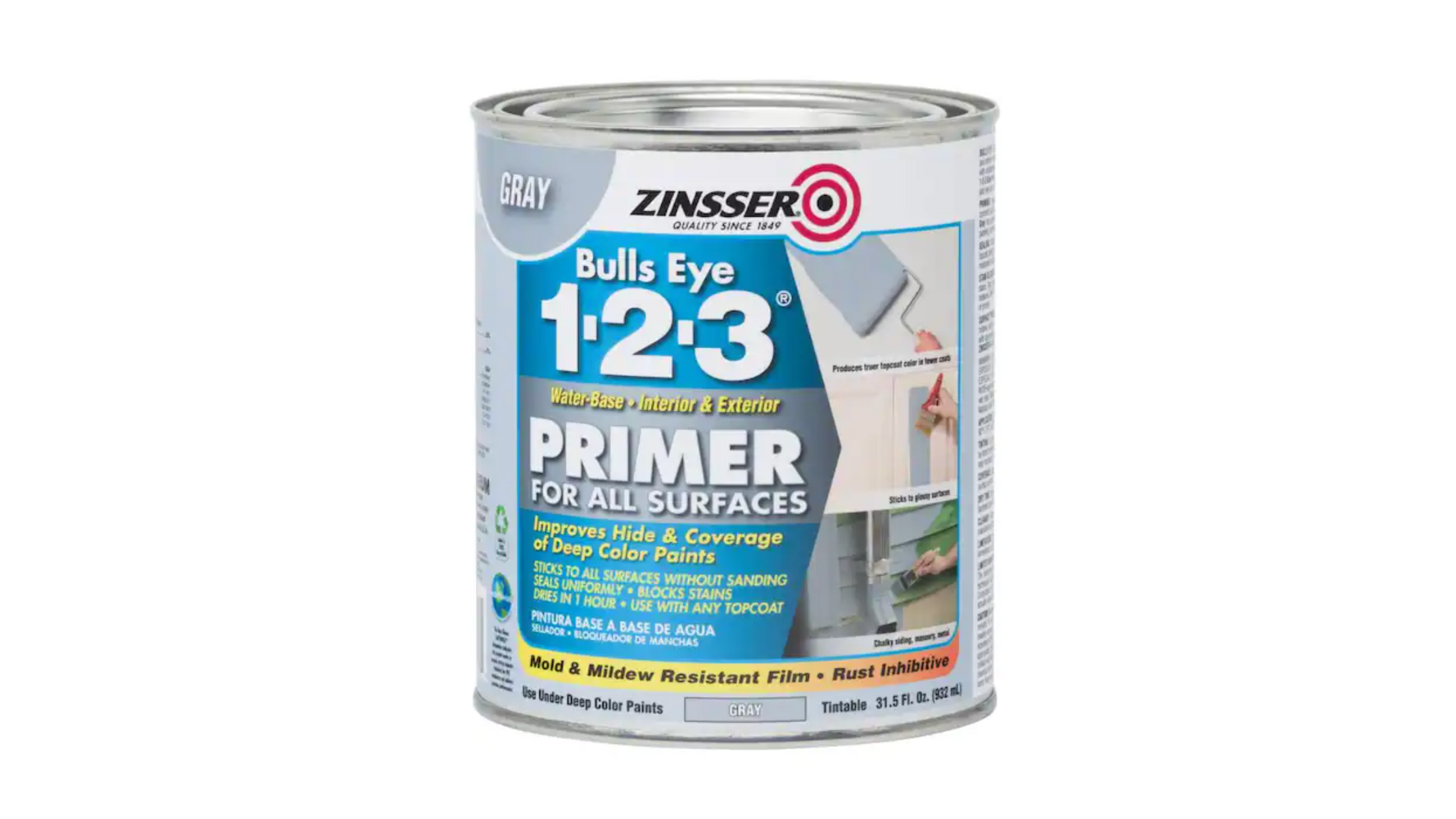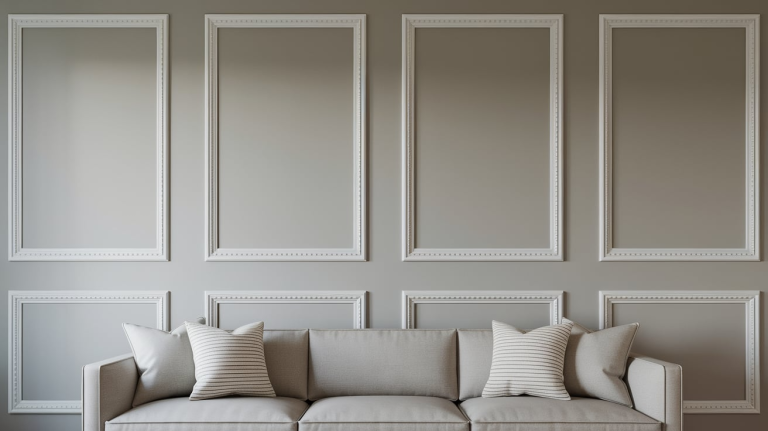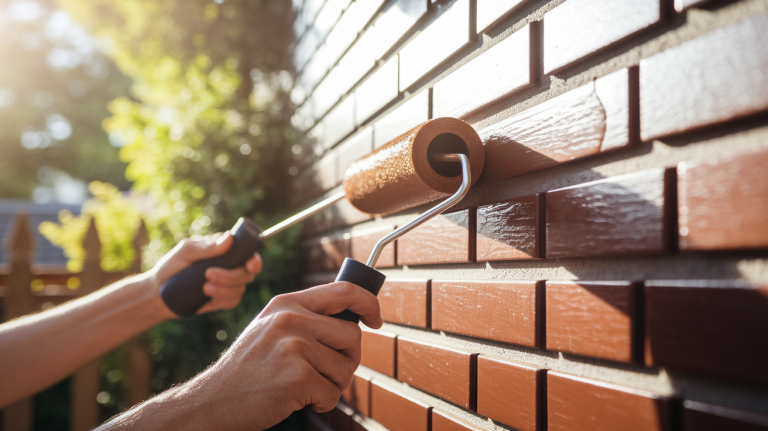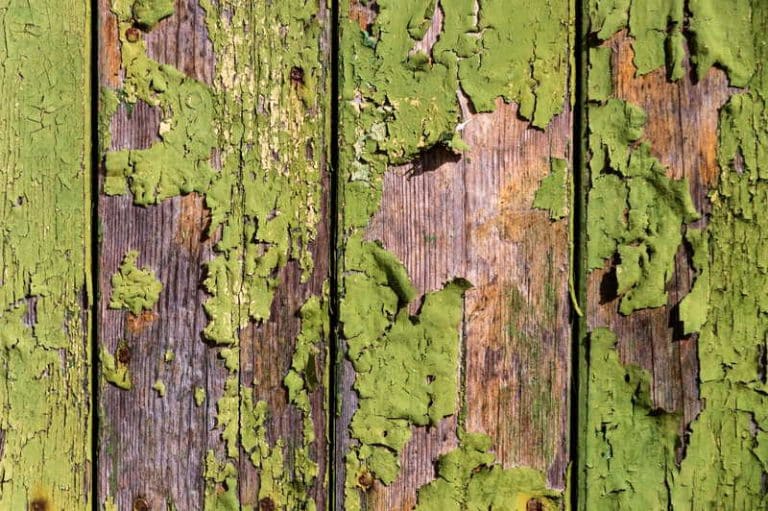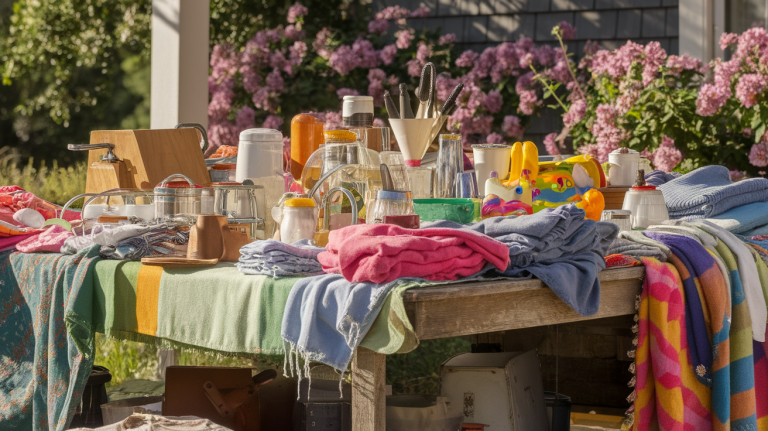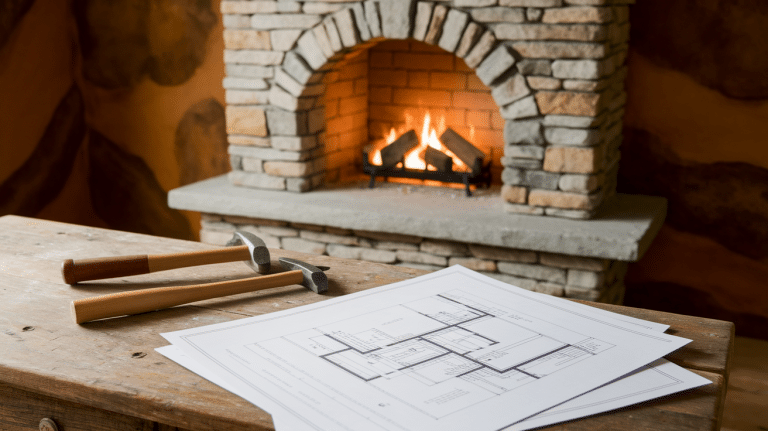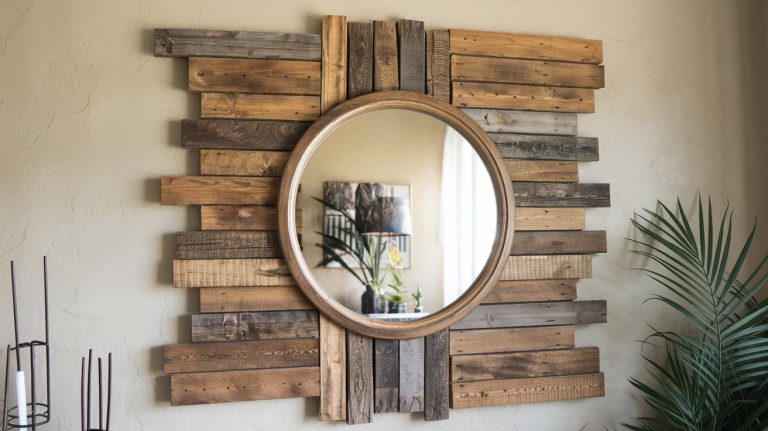Best Primer for Furniture That Makes Paint Last Longer
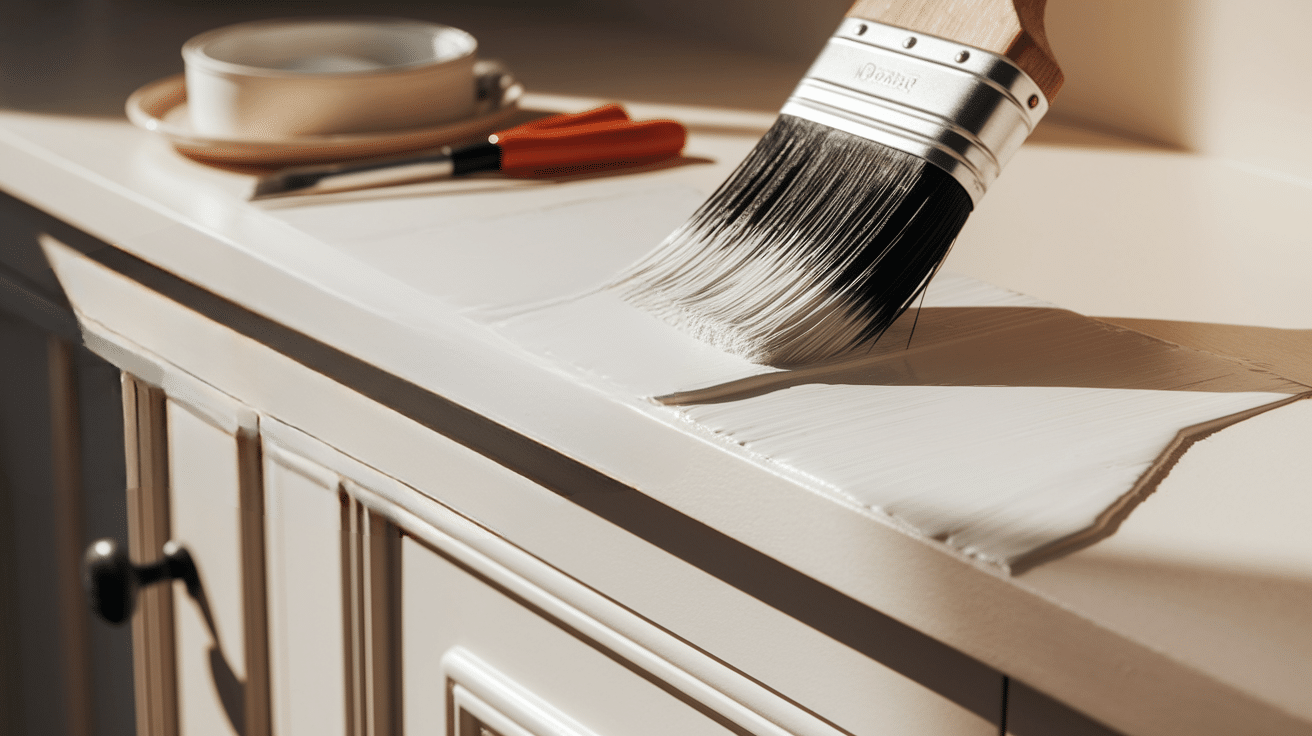
Before starting your next furniture makeover, let’s talk primer. Choosing the best primer for furniture can make or break your project.
The best primer for furniture isn’t one-size-fits-all; it depends on your piece’s surface, the type of paint you’re using, and the look you’re aiming for.
Skipping this step or selecting the wrong one can result in peeling paint, blotchy finishes, and wasted effort. But don’t worry—we’re keeping things easy here.
This blog will guide you through everything you need to know before choosing a primer, highlight the top products available, and provide application tips that anyone can master.
Types of Furniture Primers
Choosing the right primer largely depends on the type of wood you’re working with. Here’s a quick guide to help you pair the perfect primer with your project.
Shellac-Based Primer
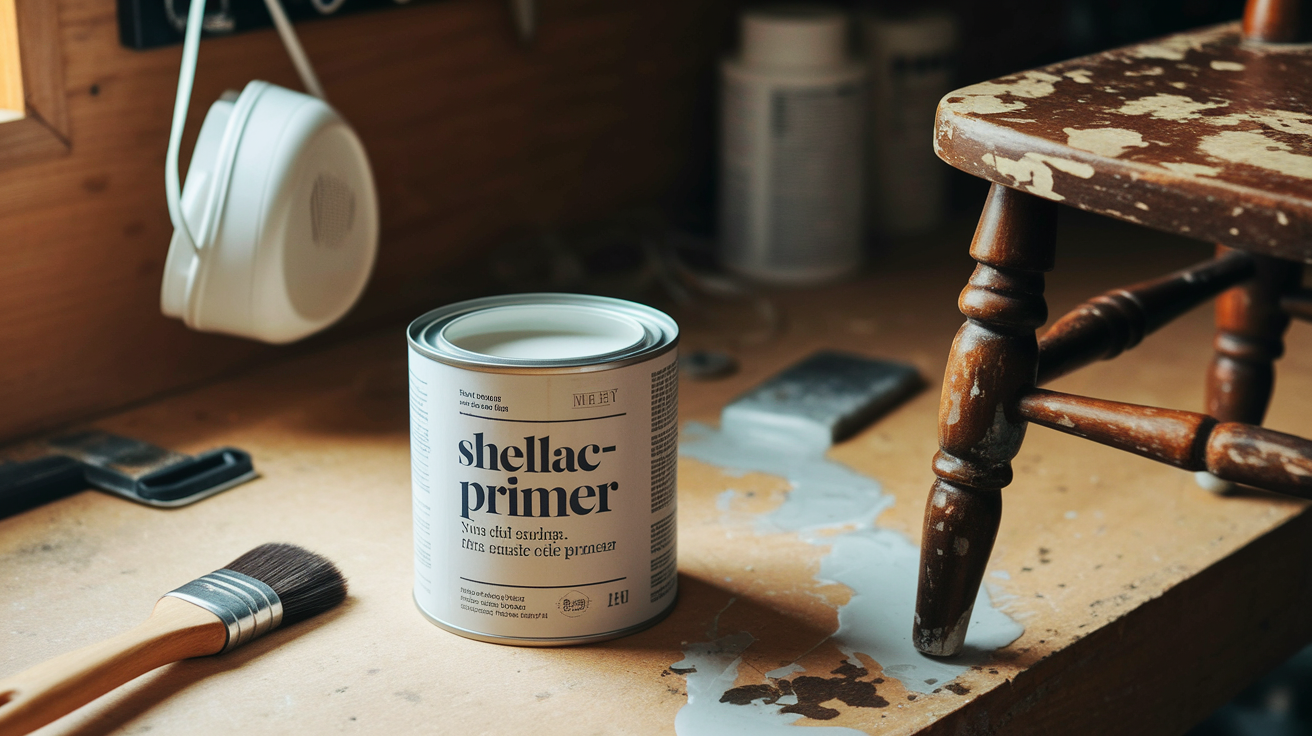
Shellac primers are the go-to for covering stubborn stains like smoke or water damage. They dry super fast and stick to almost anything, making them a solid option for furniture restoration.
Best for: Old or damaged wood, antique pieces, or anything with heavy staining.
Drying Time: Dries to the touch in just 15–30 minutes and can usually be recoated in 1 hour.
Approximate Cost: $35–$45 per gallon.
Water-Based (Latex) Primer
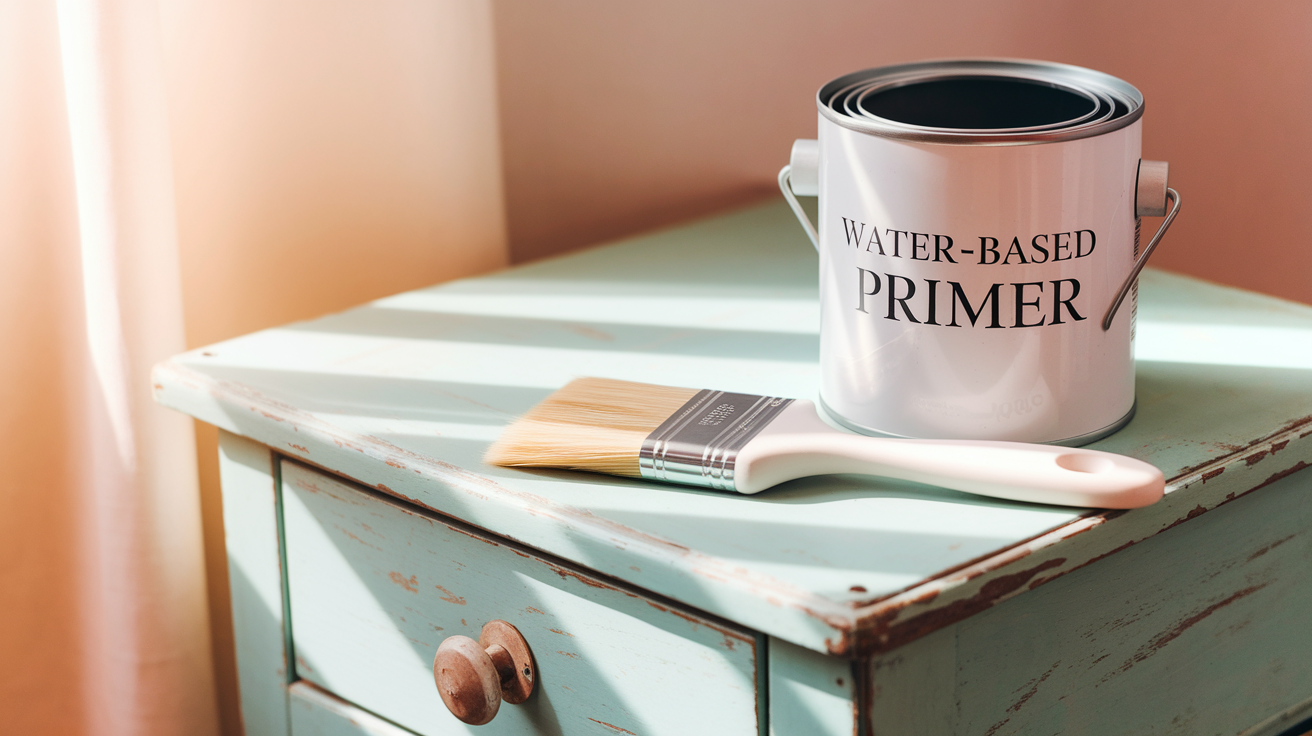
Water-based primers are ideal for lighter-duty furniture projects. They’re low in odor, clean up with just soap and water, and dry much faster than oil-based versions.
Best for: Softwoods, unfinished wood, or lightly used indoor furniture.
Drying Time: Touch-dry in 30–60 minutes, and ready to paint in about 1–2 hours.
Approximate Cost: $20–$30 per gallon.
Bonding Primer
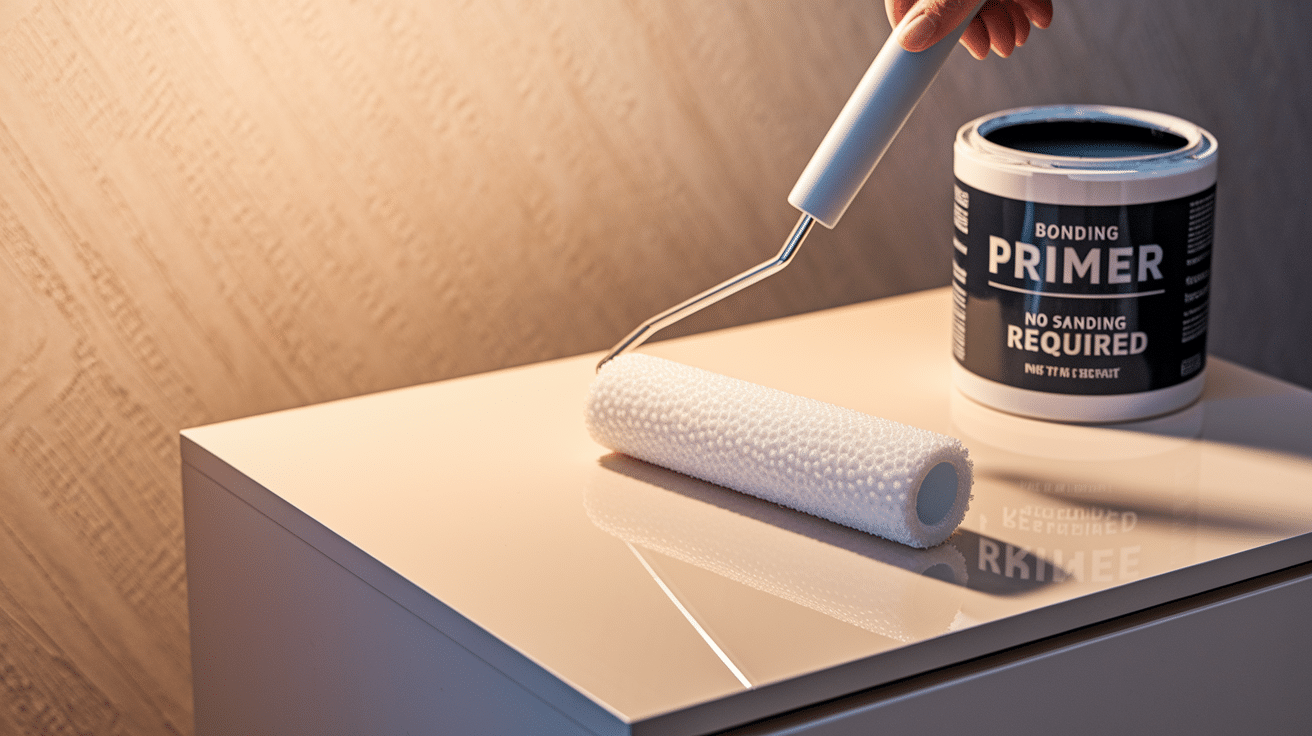
Bonding primers are specifically made to grip onto glossy or hard-to-paint surfaces. They’re perfect when refinishing furniture with a slick or sealed finish.
Best for: Varnished wood, factory finishes, or laminate-covered pieces.
Drying Time: Typically dry within 1 hour; however, wait 4–8 hours before applying paint for optimal results.
Approximate Cost: $35–$50 per gallon.
Top Picks for the Best Furniture Primers
With so many primers available, it’s easy to feel overwhelmed. To help you skip the guesswork, here are some of the top-rated, widely trusted primers used by DIYers and professionals.
1. Zinsser B-I-N Shellac-Based Primer
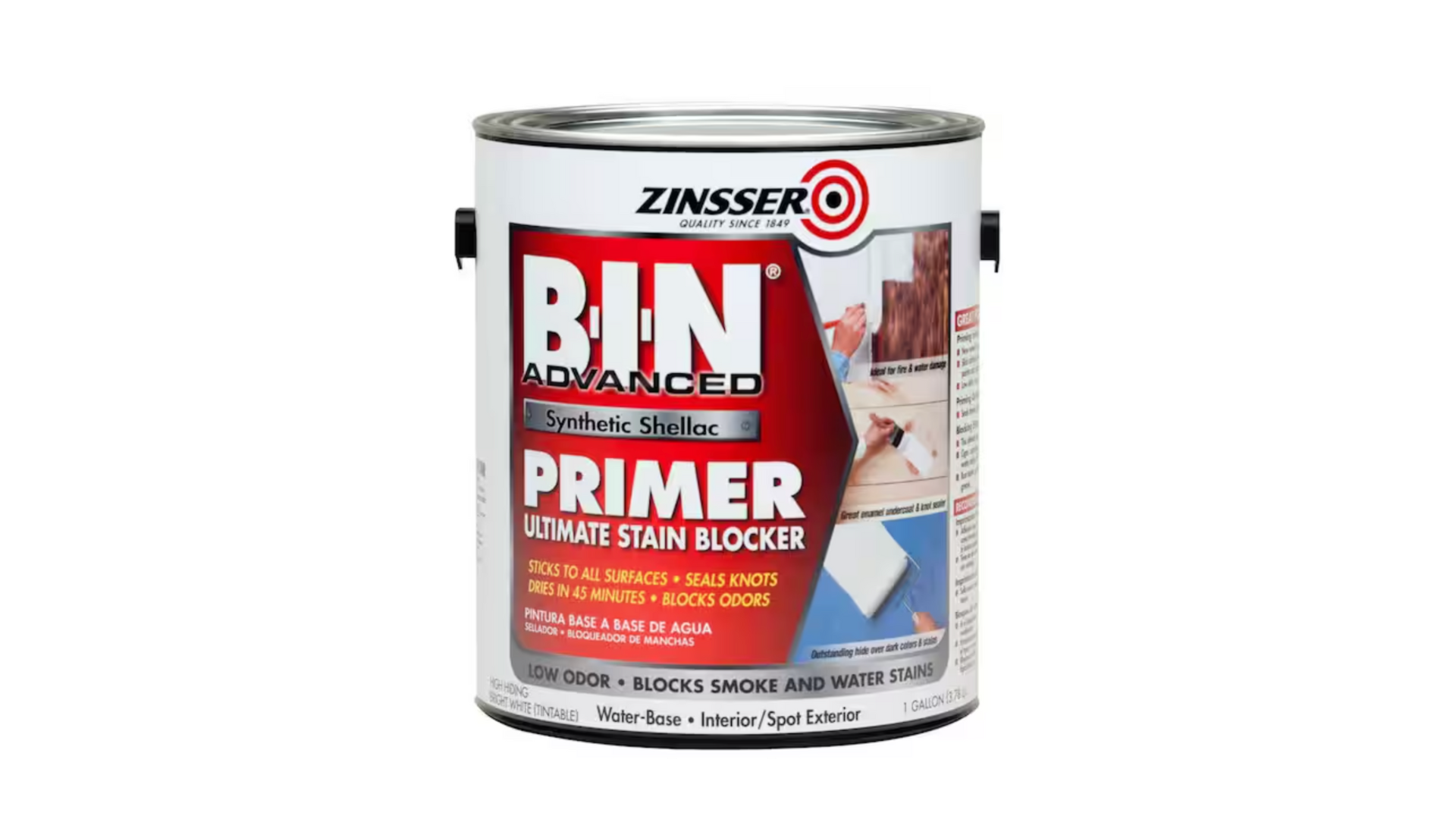
This high-performance primer is known for its unbeatable stain-blocking power. It seals knots, blocks odors, and grips tightly to any surface—wood, metal, and even glass.
Pros:
- It dries incredibly fast, often becoming touch-dry in just 15 minutes, which helps speed up.
- It works on tough stains, making it ideal for smoke-damaged or heavily used furniture.
- This primer is versatile enough for both indoor and outdoor use, providing you with greater flexibility.
- It adheres well even to glossy surfaces, eliminating the need for sanding in many cases.
Cons:
- It tends to be more expensive compared to standard primers.
- The strong odor can be pungent, so good ventilation is necessary while using it.
- The quick drying time and fumes may make it difficult to work with on large surfaces.
- Cleanup requires denatured alcohol, which can be less convenient than water-based options.
Maintenance Tips: To preserve the finish, avoid using harsh cleaners. A soft, damp cloth will do the trick. Additionally, store your painted piece in a well-ventilated, dry area to minimize wear and tear over time.
2. KILZ Original Multi-Surface Stain Blocking Primer
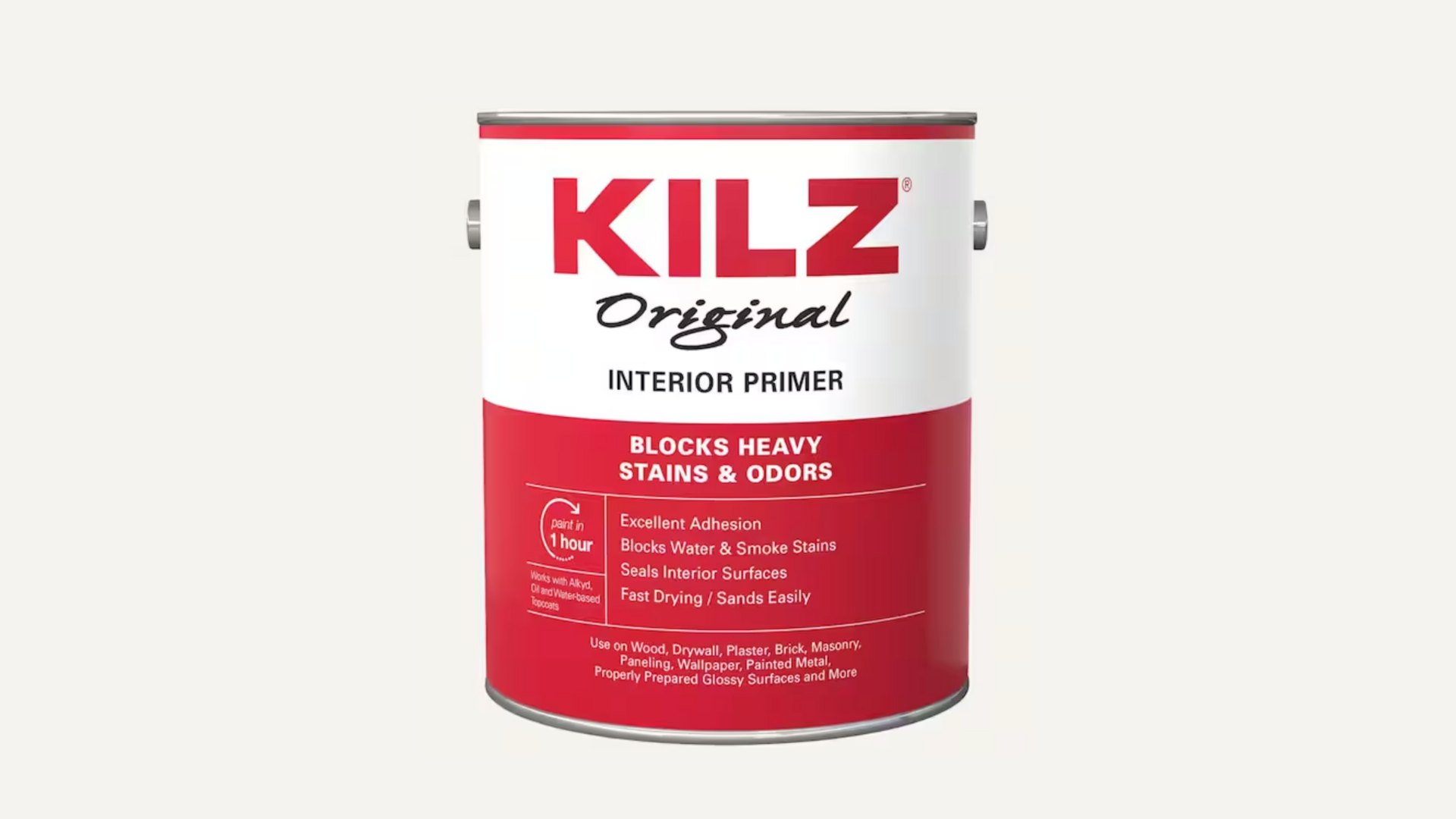
A classic choice for wood furniture, KILZ Original is ideal for sealing porous surfaces and blocking stains before painting. It adheres well and smooths out imperfections.
Pros:
- It is highly effective at blocking stains and odors, offering a clean base for your paint.
- It seals porous wood, like pine, exceptionally well, preventing blotchy finishes.
- A single coat usually provides excellent coverage, helping save on product and effort.
- It also helps hide small surface imperfections, making furniture look more polished.
Cons:
- It produces strong fumes, which make it less comfortable to use in enclosed areas.
- The drying time can be a bit slow, taking up to two hours to become touch-dry.
- Cleanup requires mineral spirits, adding an extra step to your project.
- It’s not the best option for damp or moisture-prone environments.
Maintenance Tips: Once painted, wait at least a week before placing anything heavy on the surface. Clean with mild, non-abrasive products to avoid dulling the finish.
3. Zinsser Bulls Eye 1-2-3 Water-Based Primer
This one’s a fan favorite for good reason—it’s low odor, fast-drying, and works beautifully on wood, drywall, and even metal. Perfect for indoor furniture projects.
Pros:
- It is a low-VOC primer with very little odor, making it ideal for indoor furniture projects.
- It adheres well to a wide range of surfaces, including wood, drywall, and even some metals.
- Its quick drying time—often ready to recoat in just an hour—makes it perfect for fast projects.
- Cleanup is easy and mess-free, needing only soap and water.
Cons:
- It’s not the best at blocking heavy stains or wood tannins, especially on bare wood.
- You may need to sand lightly between coats if you’re aiming for an ultra-smooth finish.
- It may not adhere as well to glossy or factory-sealed surfaces without the use of a bonding agent.
- The durability may be slightly lower than oil-based primers on high-traffic or heavily used furniture pieces.
Maintenance Tips: Furniture primed with Bulls Eye 1-2-3 stays bright longer when kept out of direct sunlight. Reapply a fresh coat of paint or topcoat every few years for high-traffic pieces.
4. INSL-X STIX Bonding Primer
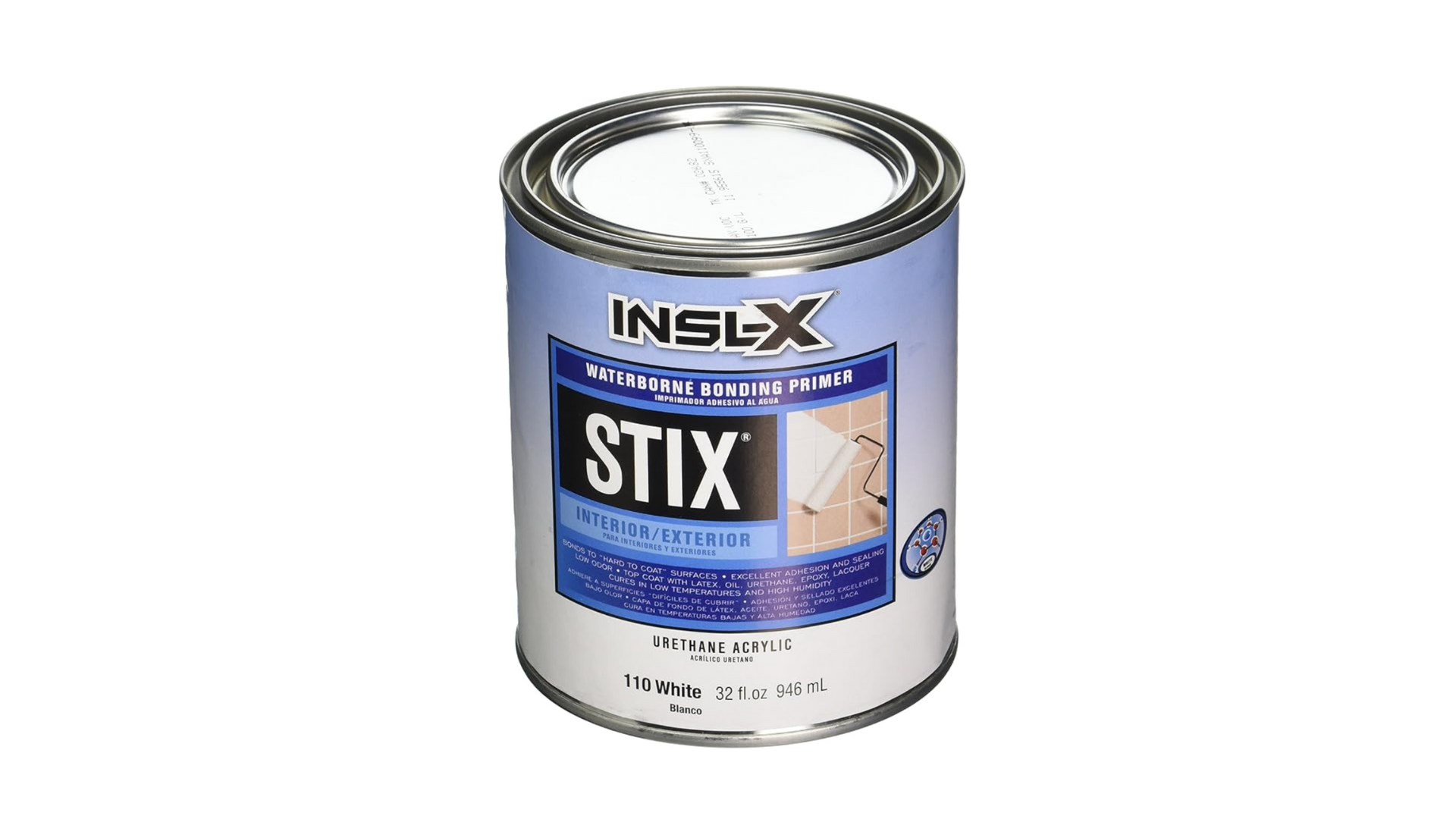
This primer is a go-to for furniture with tough surfaces like laminate or glossy finishes. It bonds like glue, making paint stick to even the slickest surfaces.
Pros:
- It works especially well on surfaces like laminate, vinyl, and previously painted wood.
- It offers unbeatable adhesion, making it ideal for tricky furniture finishes.
- The formula is low in VOCs, making it safer for indoor use with reduced odor.
- Cleanup is simple and hassle-free, requiring only soap and water.
Cons:
- While it bonds well, it isn’t the best choice for blocking deep stains.
- This primer has a longer drying time, usually requiring 3 to 4 hours before recoating.
- For best results, a properly cleaned and lightly sanded surface is required before application.
- The priced is higher than many primer options, which might not suit budget-conscious DIYers.
Maintenance Tips: Since this primer is designed for tricky surfaces, keep your painted piece protected from scratches or scuffs by adding felt pads underneath and avoiding abrasive cleaners.
5. Rust-Oleum Zinsser Cover Stain Primer
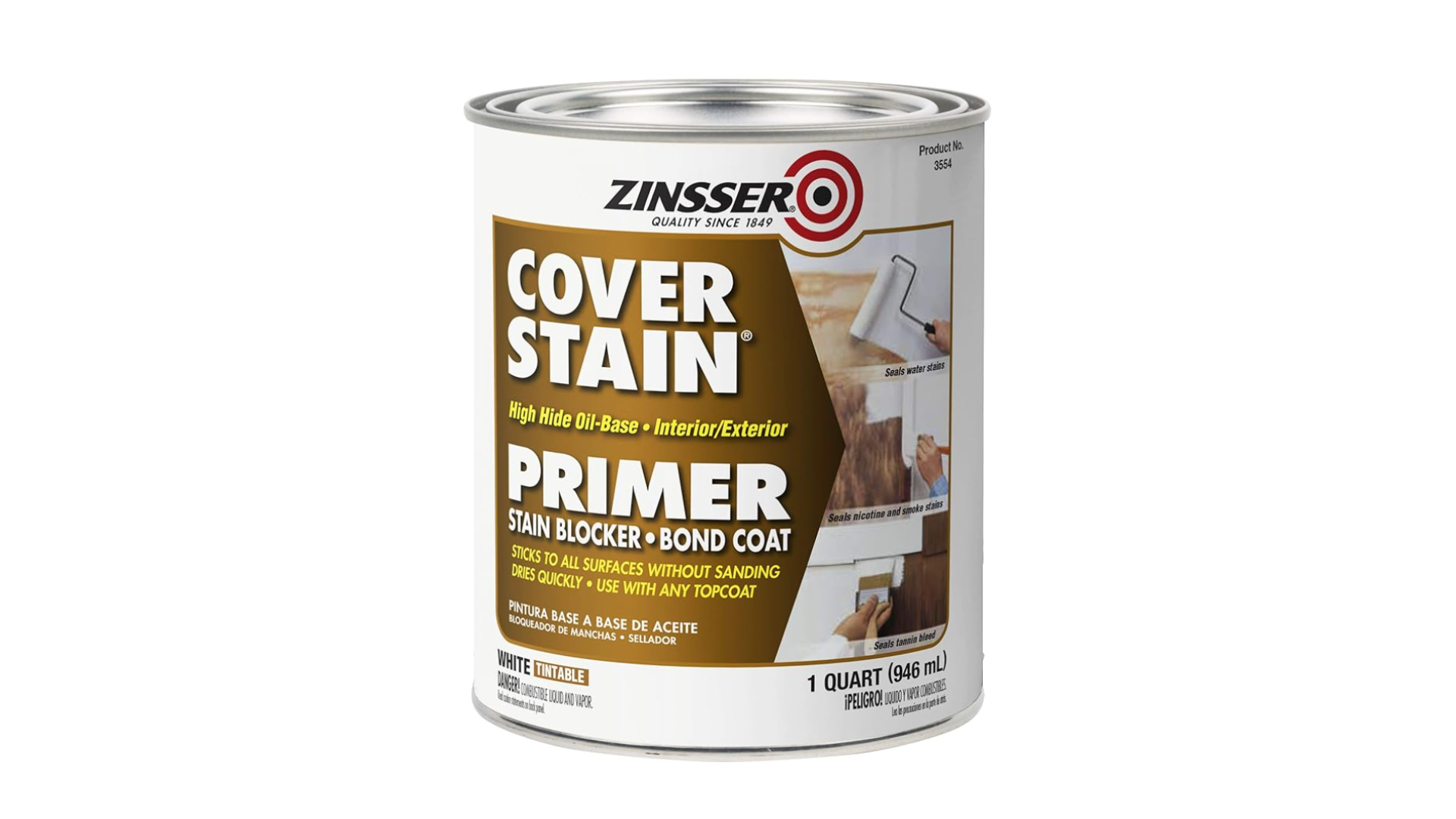
A versatile all-purpose primer for both interior and exterior furniture, Cover Stain provides excellent hiding power and durability. It’s especially good for blocking wood tannins.
Pros:
- It performs well at blocking tough stains, including those caused by water or smoke damage.
- It sticks to nearly any surface without the need for sanding, saving time on prep work.
- This primer is versatile and suitable for both indoor and outdoor furniture projects.
- It’s known for its durability, making it an excellent option for high-traffic furniture.
Cons:
- The primer takes longer to dry and cure compared to others, so patience is key.
- It requires mineral spirits for cleanup, which adds an extra step post-application.
- If not topcoated properly, the primer may yellow over time, especially in sunlight.
- The fumes are quite strong, so it’s important to use them in a well-ventilated area.
Maintenance Tips: For pieces exposed to frequent use, apply a durable topcoat over the paint to reduce chipping. Touch up any worn areas promptly to keep your finish looking fresh.
How to Apply Primer for Maximum Adhesion
Before starting the priming process, keep in mind that proper preparation and technique make all the difference in how well the paint adheres and holds up over time.
Here’s how to get the most out of your primer and set the stage for a smooth, long-lasting finish.
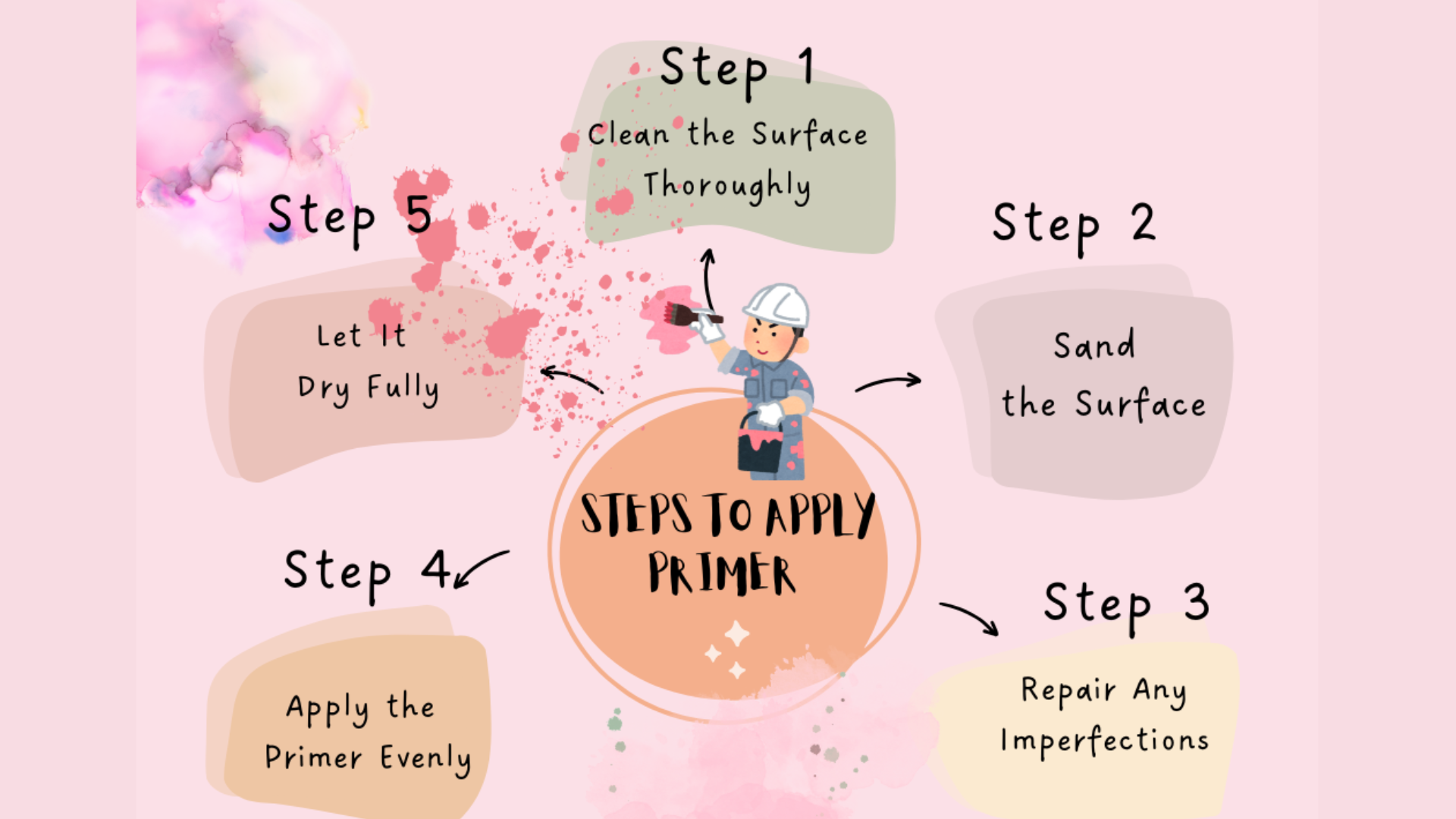
Common Mistakes to Avoid When Priming Furniture
Now that we have covered the steps to achieve a flawless, long-lasting result, it is essential to be aware of some common mistakes to avoid.
- Skipping the Cleaning Step: Dust, grease, and grime may not be immediately apparent, but they can significantly impact adhesion. Always clean thoroughly before priming.
- Not Sanding Glossy Surfaces: If you don’t rough up slick finishes, the primer may not stick well, and your paint could peel off later.
- Applying Too Much Primer: Thick coats take a long time to dry and may result in drips or uneven coverage. Stick to thin, even layers.
- Not Letting Primer Dry Completely: Painting over wet or tacky primer is a recipe for disaster. Always follow the recommended drying time.
- Skipping Light Sanding Between Coats: If your primer feels rough, a quick, light sand can make your finish way smoother. Skipping this step often leads to a bumpy texture.
- Forgetting to Spot-Repair Damaged Areas First: Primer isn’t a fix-all. Holes and scratches require filler and sanding before priming, as they’ll otherwise show through the paint.
Conclusion
And that’s it, the key to a paint job that stays strong and doesn’t peel. Now you know which types work best, how to use them, and what to avoid.”
You are well-equipped to tackle your next DIY with confidence. Just take your time, follow the steps, and trust the process.
So, what are you waiting for? Go ahead—grab that brush and give your furniture the glow-up it deserves. You’ve got this!
Frequently Asked Questions
What Happens if I Skip Primer on Furniture?
Skipping primer can lead to peeling paint, uneven coverage, and poor adhesion, especially on glossy, stained, or porous surfaces like raw wood or laminate furniture.
Is It Okay to Use Exterior Primer on Indoor Furniture?
Yes, you can. But it’s often overkill. Exterior primers are more durable but may emit stronger fumes. Use them only if the piece is exposed to moisture.
Do I Need to Remove Old Paint Before Priming?
Not always. If the old paint is intact, clean and sand it lightly before priming. Remove it only if it’s chipping, flaking, or incompatible with your new primer.

